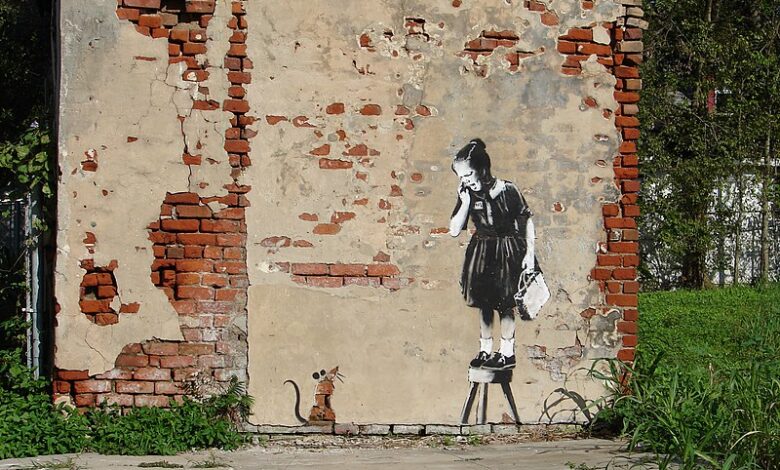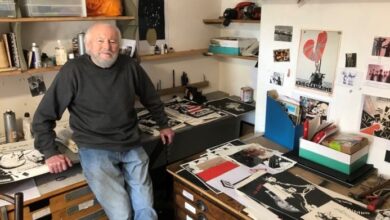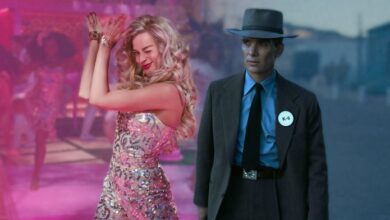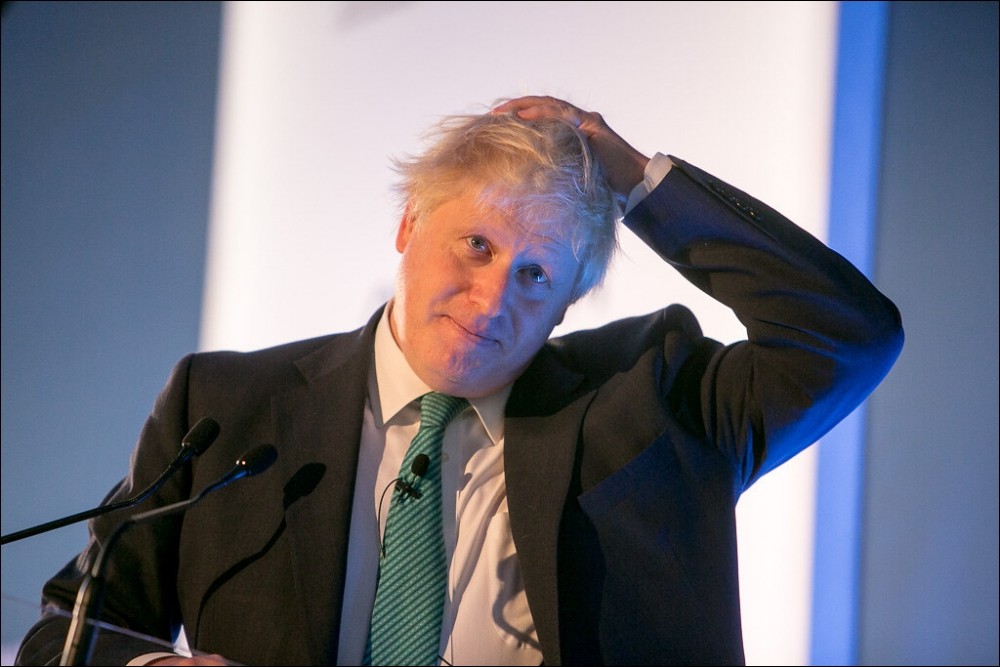Review: Banksy’s Glasgow exhibition

Lynda McEwan
Banksy, that ever elusive British graffiti artist, had an exhibition in Glasgow recently, showing, for the first time, the tools of his trade and their wonderful creations.
Cut & Run, 25 years card labour, gives an insight into the mind of the man who has produced hundreds of pieces of controversial graffiti across the world. Centred around his contempt for British institutions and by the very nature of graffiti art and its illegality, politics and the police come under his extremely creative and critical eye.
A police riot helmet, hanging from the ceiling of a darkened passageway, turned into a mirrored disco ball entitled Met Ball (and now for something quietly reflective) and another full size statue of the full police riot uniform sat atop a brick column on a gaudy fairground horse ride, perpetually giddying up, the juxtapose an enthralling ridicule of a force that this year has been found to be institutionally sexist and racist.
Banksy’s politics are anti-war, pro-peace, anti-capitalist with a huge helping of deliberately offensive humour. Graffiti done correctly should illicit a visceral reaction and this certainly does that, and then some.
The exhibit charts the artist’s debut into the world of graffiti art, feeling as he did that the almost elite nature of graffiti art was as unwelcoming as the definitively elite world of fine art, but managing instead to find his own way amongst what he called “ordinary people”.
Other displays included an interactive truck filled with petrified cuddly toys to replicate the conditions of farm animals, like wrongly accused on death row, on their final journey to the slaughterhouse and an old telephone box surrounded by covert government officials carrying surveillance paraphernalia which had originally been painted on the wall of GCHQ, the government surveillance headquarters in Cheltenham.
And of course that epic Sotheby’s auction prank where he arranged for a painting, that sold for a cool £1.2 million, to spontaneously shred immediately after the sale completed.
My personal favourite was a replica of a piece from Margate where Banksy painted a woman frozen in time, her arms outstretched in a pushing motion, resplendent in traditional 50s housewife uniform of apron and rubber gloves, winking conspiratorially despite a blackened eye and missing tooth alongside a dumped freezer at the side of a building with two legs sticking out seemingly from the icy grave, symbolising his position on domestic violence.
The piece brought many visitors to Margate, all desperate to get a glimpse of his latest art. Eventually it and the crowds were painted by plein air painter, Pete Brown and it was amazing to see them both side by side:
The exhibit, shown at the GOMA over the summer attracted large crowds and had the SNP-run Glasgow council officers boasting about their prowess in bringing it to the city. Ironically, one of Banksy’s tags is the humble rat but, when in real life and swarming across Glasgow’s housing schemes after refuse workers last year were forced to take strike action for better wages and conditions against CoSLA and the Scottish government, it took on a much more sinister form.
In October Glasgow Unison took Glasgow’s museum workers out on a 5-day strike against 38 proposed job loses, a 30% cut in posts. Taking a stand to defend Glasgow’s world class museums against the brutal axe of austerity is vital and the solidarity sent from Banksy on hearing the cuts followed so closely from his sold out exhibition. Perhaps he would create some graffiti to add a voice to the anger felt by these workers fighting to save jobs and the quality of the service.
The exhibition, although breathtaking does show how dismal life is under capitalism and my only critique would be it offers no real solutions to those problems. Perhaps if he’s ever in the city again he can join a picket line or even the Socialists?



